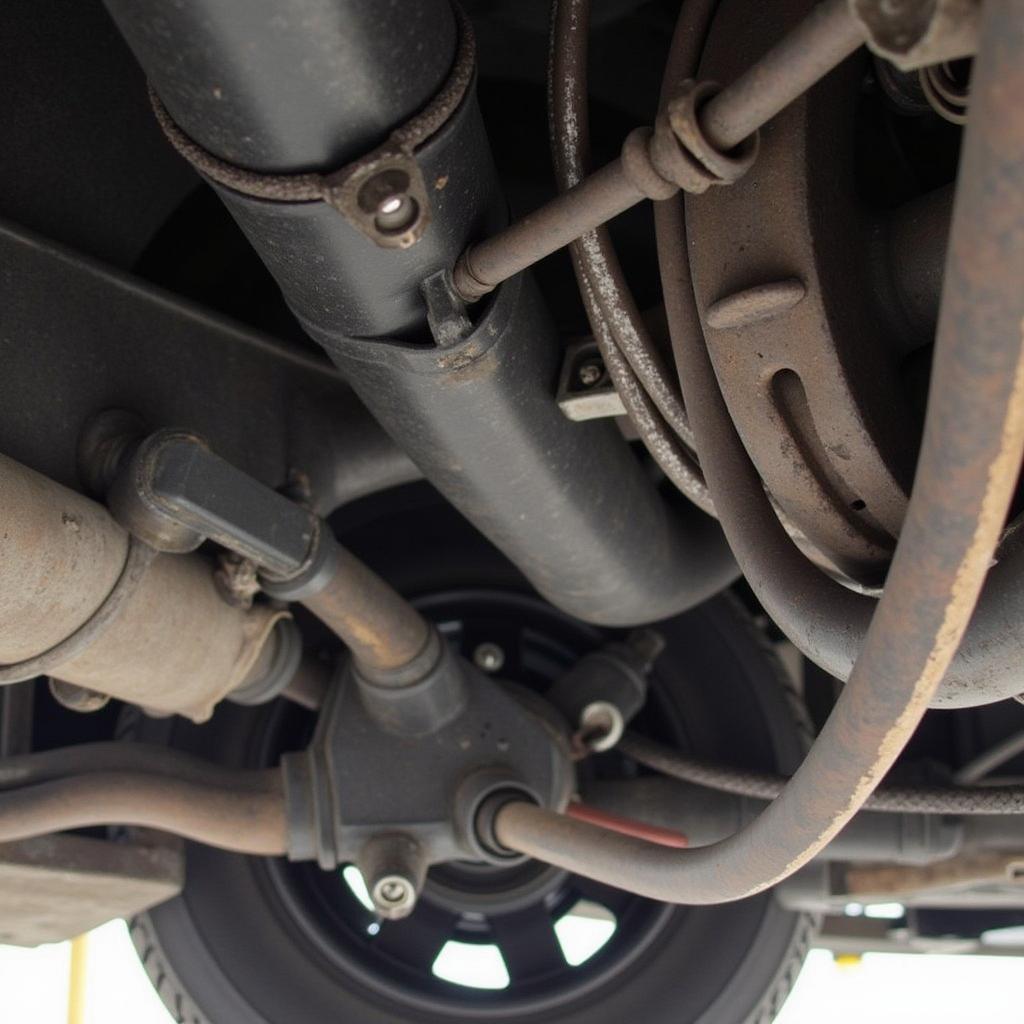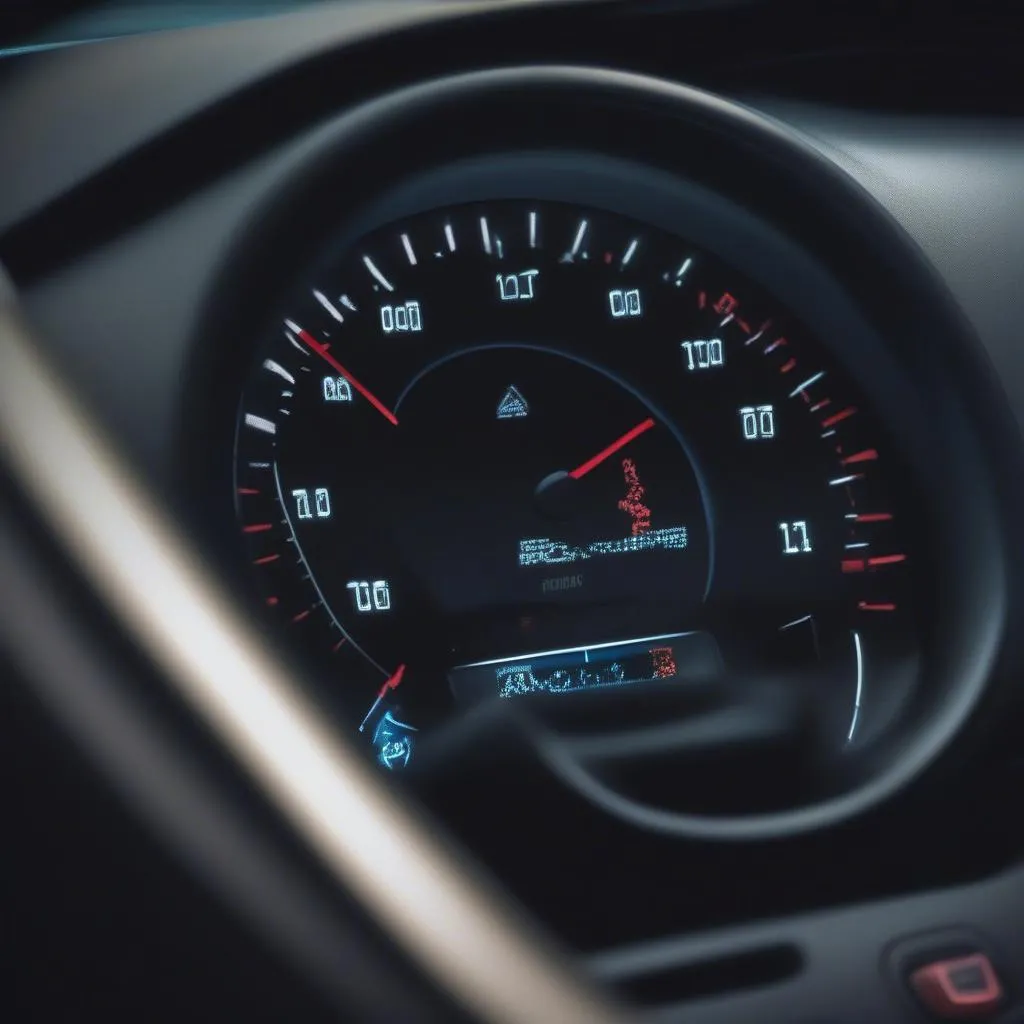The 1974 Corvette, a classic American sports car, is renowned for its powerful engine and sleek design. However, like any vintage vehicle, it can present unique challenges, especially when it comes to its braking system. One such challenge is the brake distribution warning switch, a crucial component that alerts drivers to potential issues with the car’s braking balance. This article will delve into the intricacies of the 1974 Corvette brake distribution warning switch, guiding you through troubleshooting steps, potential solutions, and expert advice to ensure your classic car stops safely and reliably.
A common issue reported by 1974 Corvette owners is the illumination of the brake warning light on the dashboard. This typically signifies an imbalance in the brake system, where one set of wheels (front or rear) might be receiving more braking force than the other. This imbalance can lead to uneven braking, making the car pull to one side during braking, which can be dangerous, especially at higher speeds.
Understanding the Brake Distribution Warning Switch
The brake distribution warning switch in a 1974 Corvette plays a vital role in maintaining the car’s braking stability. It’s a pressure-sensitive switch located in the brake system’s hydraulic lines. When the hydraulic pressure between the front and rear brakes becomes uneven, the switch activates, illuminating the brake warning light on the dashboard. This warning serves as a crucial alert, prompting the driver to address the underlying issue before it escalates into a safety hazard.
Common Causes of Warning Light Activation
Several factors can lead to the activation of the brake distribution warning switch in your 1974 Corvette. Identifying the root cause is essential for effective troubleshooting:
-
Worn Brake Lines or Hoses: Over time, brake lines and hoses can deteriorate, leading to leaks or reduced hydraulic pressure. Uneven pressure distribution due to leaks can trigger the warning switch.
-
Malfunctioning Proportioning Valve: The proportioning valve regulates the brake fluid pressure distributed between the front and rear brakes. If this valve fails or becomes clogged, it can disrupt the pressure balance, activating the warning switch.
-
Air in the Brake Lines: Air in the brake lines can compress, leading to a “spongy” brake pedal feel and reduced braking efficiency. This can also disrupt hydraulic pressure, potentially triggering the warning switch.
-
W Worn or Damaged Brake Calipers: Worn or damaged brake calipers can cause uneven brake pad wear and inconsistent hydraulic pressure distribution, potentially leading to warning light activation.
-
Faulty Brake Distribution Warning Switch: While less common, the warning switch itself can malfunction, sending a false signal and illuminating the warning light unnecessarily.
Troubleshooting the Warning Light
If the brake warning light illuminates on your 1974 Corvette’s dashboard, it’s crucial to address the issue promptly. Here’s a step-by-step troubleshooting guide:
-
Check Brake Fluid Level: Begin by inspecting the brake fluid level in the master cylinder reservoir. Low fluid levels often indicate a leak in the system, which needs immediate attention.
-
Inspect Brake Lines and Hoses: Thoroughly examine all visible brake lines and hoses for any signs of leaks, cracks, bulges, or wear. Pay close attention to areas where lines bend or connect to components.
-
Inspect the Proportioning Valve: Locate the proportioning valve, usually found along the frame rail or near the master cylinder. Look for any signs of leaks, damage, or corrosion.
-
Check for Air in the Brake Lines: If you suspect air in the lines, bleeding the brakes is essential. This process involves opening the bleed valves on each wheel cylinder or caliper to release trapped air while replenishing the system with fresh brake fluid.
-
Test the Brake Distribution Warning Switch: If other components check out, it’s prudent to test the warning switch itself. This usually involves using a multimeter to check for continuity or resistance across the switch’s terminals.
 1974 Corvette Brake Lines
1974 Corvette Brake Lines
Seeking Professional Assistance
While troubleshooting the brake distribution warning switch in your 1974 Corvette can be done at home with some mechanical aptitude, it’s crucial to acknowledge when professional help is necessary. If you’re uncomfortable with any step of the process or if your initial troubleshooting doesn’t pinpoint the issue, seeking assistance from a qualified mechanic specializing in vintage Corvettes is strongly advised.
“Working on vintage car brakes requires a certain level of expertise,” says John Smith, a seasoned Corvette mechanic with over 20 years of experience. “These systems might seem straightforward, but overlooking a minor detail can have significant implications for safety. When in doubt, it’s always best to consult with a professional.”
Preventive Maintenance Tips
Like any aspect of your classic car, preventative maintenance goes a long way in preventing brake issues:
-
Regular Brake Fluid Flushes: Brake fluid is hygroscopic, meaning it absorbs moisture over time. This moisture contamination can corrode brake components and reduce braking efficiency. Regularly flushing the brake system with fresh fluid, as recommended in your Corvette’s owner’s manual, is crucial.
-
Periodic Brake Inspections: Regularly inspect your brakes for signs of wear or damage, including checking brake pad thickness, rotor condition, and the overall integrity of calipers, lines, and hoses.
-
Address Warning Lights Promptly: Never ignore illuminated warning lights on your dashboard, especially those related to the braking system. Addressing issues promptly prevents them from escalating into major, potentially dangerous problems.
 1974 Corvette Brake Proportioning Valve
1974 Corvette Brake Proportioning Valve
Conclusion
The brake distribution warning switch in your 1974 Corvette is a critical safety feature. Understanding its function and knowing how to troubleshoot related issues can save you from potentially dangerous situations on the road.
By following the steps outlined in this guide and seeking professional help when needed, you can keep your classic Corvette running smoothly and, most importantly, stopping safely for many miles to come. Remember, a well-maintained classic isn’t just a joy to drive; it’s a testament to responsible ownership.

